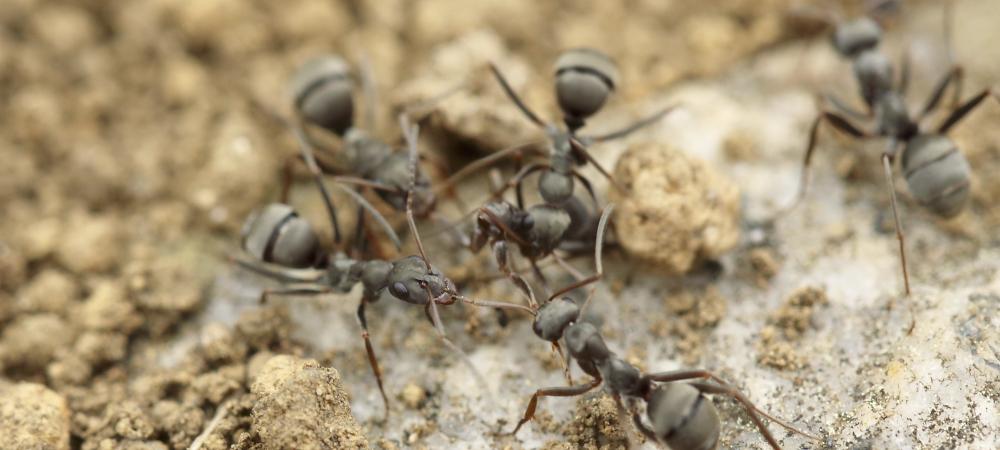Ants vs Termites: How to Tell Them Apart

When you spot small, winged insects in or around your home, you might wonder: is it an ant or a termite? Though they may look similar at first glance, ants and termites have key differences in appearance, behavior, and the damage they cause. Understanding which pest you're dealing with is critical for choosing the right treatment.
What’s the Difference Between Ants and Termites?
Although both ants and termites are social insects that live in colonies, there are a few clear differences that can help you tell them apart.
Key Ant Features
Ants are commonly found inside homes, especially in search of food or water. They’re usually easy to spot due to their frequent movement in open areas like kitchens, bathrooms, and along baseboards. Their physical structure and behavior make them distinguishable from termites if you know what to look for.
- A narrow, pinched waist that gives them a segmented body appearance
- Elbowed antennae that bend in the middle
- Wings of unequal length (in swarmers, the front wings are longer than the hind wings)
- A dark-colored body, often black, reddish-brown, or dark brown
- A tendency to be seen above ground, especially near food sources or moisture
- A diet that includes sugars, proteins, and household food scraps
Key Termite Features
Termites are more secretive and destructive than ants. They tend to stay hidden within walls, wood structures, or soil, which makes them harder to detect until damage is already done. Physically, they have a softer appearance and lack the defined waist of ants, with features suited for life inside wood and underground colonies.
- A broad, straight waist that gives them a more uniform body shape
- Straight, beaded antennae without bends
- Wings of equal length if they are swarmers (reproductive termites)
- A pale or creamy white body, especially among worker termites
- A preference for hiding inside wood, behind walls, or beneath the soil surface
- A diet of cellulose, meaning they feed on materials like wood, drywall, and paper
How to Spot Ants in Your Home
Ants are more likely to be found near food sources. Here are common signs of an ant infestation:
- Trails of ants in the kitchen or near pet food
- Small piles of dirt or debris near entry points
- Winged ants during warmer months
- Rustling sounds inside walls (in the case of carpenter ants)
Common Ant Species in Homes
Common ant species found in DC homes are:
- Carpenter ants – can tunnel through wood but don’t eat it
- Odorous house ants – give off a strong smell when crushed
- Pavement ants – often found near foundations or under concrete
Signs of Termite Activity
Termites are harder to detect, but the damage they cause is much more severe. Look for these warning signs:
- Mud tubes along your foundation or walls
- Discarded wings near windows or doors (a sign of termite swarmers)
- Wood that sounds hollow when tapped
- Buckling floors, sagging walls, or doors that don’t close properly
Which Is More Dangerous: Ants or Termites?
While ants are certainly a nuisance, termites are far more destructive. They can compromise the structural integrity of your home and cause thousands of dollars in damage before you even realize they’re there.
If you see any potential signs of termite activity, it’s important to act quickly to avoid further damage.
Do Ants and Termites Require the Same Treatment?
No—ants and termites require very different treatment approaches. Ants are typically treated with baits, traps, and by sealing entry points, while termite control often involves liquid barriers, bait systems, or fumigation.
Need Help Identifying or Treating Ants or Termites?
At Century Termite & Pest Control, we provide professional inspections and tailored treatment plans to eliminate ants, termites, and other household pests. Whether you’re dealing with a few ants in the kitchen or signs of serious termite damage, our team can help protect your home fast. Check out our pest control services and termite control services today!
